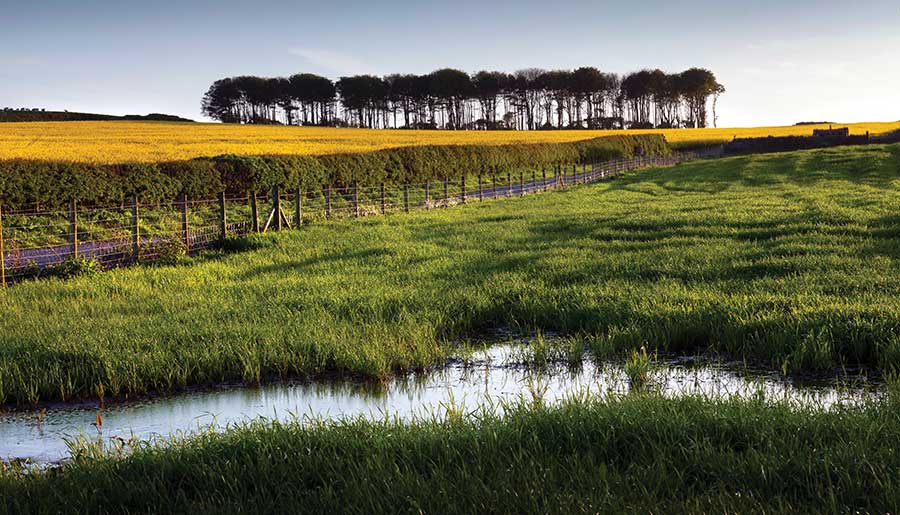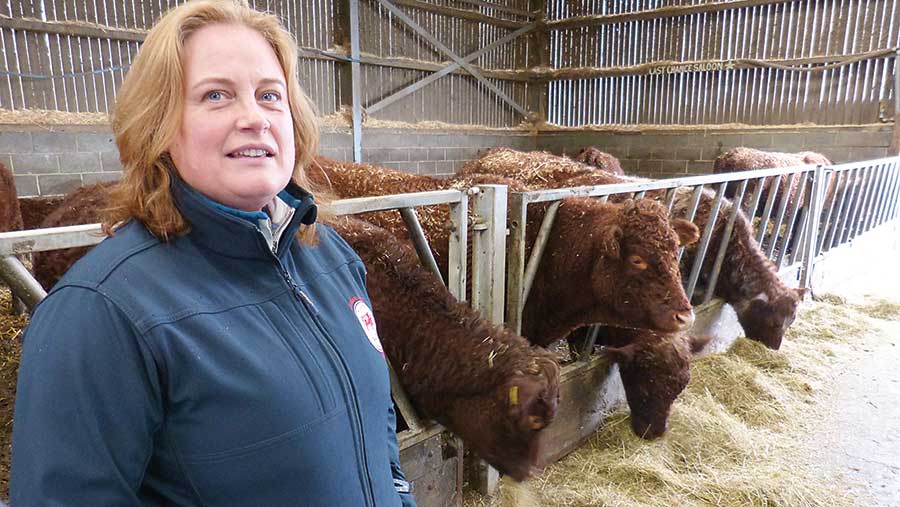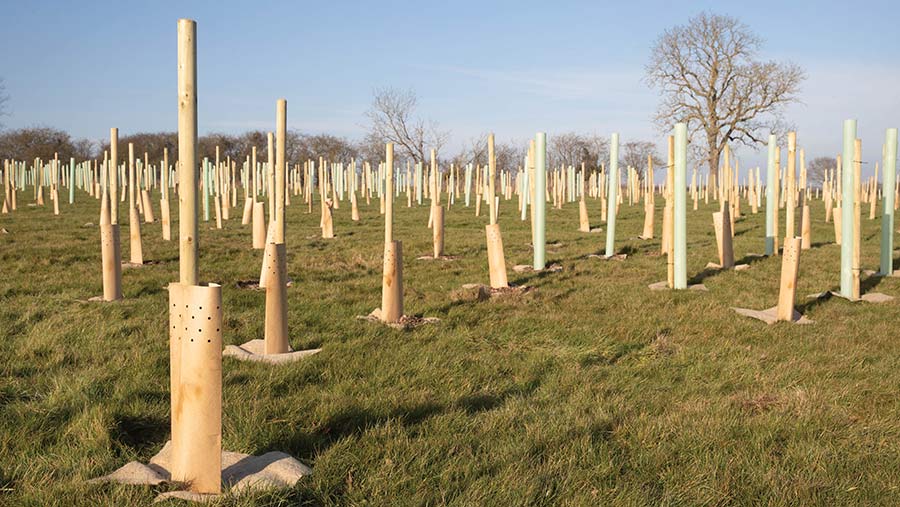Privately funded natural capital schemes: What to consider
 © Leighton Collins/Adobe Stock
© Leighton Collins/Adobe Stock Still in their infancy, most privately funded natural capital schemes involve taking a long-term approach and creating units and credits that can be bought or sold – usually offering farms greater financial support than that on offer from Environmental Land Management schemes.
However, the considerations and risks are very different to those of the statutory schemes with which most farmers and landowners are familiar.
They work by incentivising new environmental improvements or changes to the way the land is managed, rather than actions already rewarded by public payments.
See also: Advice on long term land agreements as new markets develop
What are the options?
For owner-occupiers there are three main options to consider when it comes to making money from nature restoration, advises Sophia Key, partner and head of natural capital at Birketts.
1. The first is to simply sell land to a developer or another party who wants to make use of it for environmental purposes. Valuation can be tricky but there is plenty of demand.
2. The second is to let a third party take a lease on the land and create or enhance a habitat and sell biodiversity, water or carbon units for itself, with the farmer receiving a rental payment for that land.
“Typically those payments can be above the level of an agricultural rent, provided you agree to manage the land,” says Sophia.
“This lease-back model is quite low risk and in some cases it does allow the farmer to be the manager of the site – earning them a bit more income on top of the lease payments.”
3. The third option – a higher-risk but higher-reward model – is for the farmer to self-deliver the creation or enhancement of habitats, creating biodiversity or other units and selling them on.
“There are brokers who can help you promote your land and find opportunities, all of whom will take a cut of the final deal, but they can help to de-risk and facilitate the self-delivery model.”
For anyone looking at natural capital opportunities, Sophia has three main pieces of advice:
- Don’t panic There is no obligation to do anything, she stresses. “This is an opportunity, rather than a threat.”
- Look at all the opportunities Stop and take a step back, so that an informed decision can be made on the right nature-based solution. If necessary, take specialist advice.
- Consider collaboration Think about working with your neighbours and exploiting the connectivity of habitats.
Additionality
“The private market opportunity is all in additionality,” says Ivan de Klee of Nattergal, a company which invests in and delivers nature recovery at scale.
“A change is required to get any money; most farm businesses are already being paid for public goods through agri-environment schemes.”
As a result, it can be more difficult to navigate where businesses are starting from a high baseline, as the private market wants to reward something additional, he says.
“This market is not about maintenance payments – you need to think about other things that you can do.”
The first step for most farmers is to set a baseline, suggests Tim Hopkin of land and natural capital mapping service Land App.
“If you know what you’ve already got on the farm and how to use it, then you can go and see what incentives are out there.
“If they look good, you can negotiate. That may involve working with other farmers in certain locations – there’s a massive opportunity for groups of farmers working on a landscape scale.”

© Tim Scrivener
Collaboration
That is a view shared by Digby Sowerby of the Environmental Farmers Group (EFG), who points out that collectively, farmers have more bargaining power through the connectivity of landscapes.
“It means that you can work with whatever else is going on in your area, which is often more appealing to potential buyers of environmental services.”
Sharing knowledge and intelligence is a further benefit, he believes, as it simplifies the process of identifying the best providers and the integrity of their offers.
“Put another way, by collaborating, it helps to reduce the risk to individual farmers.”
EFG is a company but acts as a co-operative, with farmers joining and paying a fee.
When a deal is struck, 88% of the value of the trade goes back to the farmer, 9% is shared equally among other farmers in the group, and 3% goes to the central function.
The aim is to deliver environmental change at scale as well as a commercial return to farmers, Digby adds.
Case Study: Rachel Hallos, Beeston Hall Farms, West Yorkshire

© Rachel Hallos
South Pennines tenant farmer Rachel Hallos is one of many considering what green finance could have to offer, as she looks to prepare the family business for a more certain future and ensure its longevity.
Farming 810ha of mostly moorland as a Yorkshire Water tenant, the business is already doing bold environmental work and is about to roll over an existing Higher Level Stewardship (HLS) agreement – something Rachel describes as “better the devil you know”.
As well as working with Natural England on its HLS scheme, the farm follows the “no inputs” stipulation from Yorkshire Water, which means no sprays or fertiliser.
It also works in partnership with the RSPB and co-operates with the Moors for the Future partnership on flood alleviation measures and with the Environment Agency on water catchment management.
“It’s the right thing to do,” says Rachel. “Environment is one of our income streams; the others are sheep and beef cattle.”
The whole farm is a designated water catchment, as there are two reservoirs on the land.
She recognises that the HLS scheme is already paying for public goods provision and that the private market will want something else.
Not keen to stop taking the government funding, she is less clear on how blended finance might work or if re-packaging the farm’s offer will bring a second revenue.
“It’s confusing and we don’t want to miss the boat or sign up to a bad deal,” she says.
She is pondering the next step. “There are eye-watering figures being mentioned with schemes such as Biodiversity Net Gain and carbon trading, which look all the more appealing as BPS continues to be eroded and cash flows take a hammering.”
With two children coming into the business, Rachel is aware that the farm can’t rely on food production alone for income, but is wary of introducing huge changes while agricultural policy developments remain fluid.
“We’ve already radically changed the business once when we went out of dairy farming,” she says. “I really need to understand what’s in it for us before we go through any further upheaval – many of these fledgling schemes involve long-term obligations.”
At the same time, she is very conscious that the supply chain is making net zero demands, and her water company landlord has targets to hit.
As a tenant, she is uncertain whether the farm’s natural capital is hers to sell or what the implications of any private market deals are for the tenancy.
“Whatever we do decide, we will need to have serious conversations with our landlord.”
Another concern is whether the farm can achieve the best possible outcome on its own, or if that is only possible by working with others.
“I’m a believer in collaborative working and agree with the premise that we can be stronger together. Would a group of tenant farmers going to our landlord with a wider scheme be better?”
Tenancy Restrictions

© Tim Scrivener
Agricultural Holdings Act 1986 tenants, despite having long-term access to the land, have limited ability to enter natural capital markets and must be careful not to take themselves out of the protection of the act with any deals that they strike.
“Where that happens, landlords may have an opportunity to get the land back, so proceed with caution and with specialist advice, and perhaps in collaboration with your landlord,” says Sophia Key of Birketts.
Subletting is very rarely an option under both AHA and FBT agreements, ruling out the lease model.
Surrendering part of the tenancy to the landlord may be negotiable so that they can put their own scheme into place, but would need very careful negotiation, timing and compensation and should not be undertaken without advice, she says.
Short-term FBTs, even if they permit nature-based diversifications, may present difficulties due to the long-term agreements required for their delivery.
Tenants involved can usually only enter the marketplace in consultation with landlords.
“For anyone taking on a new FBT, look at it with your landlord and think about any revenue that may come from the natural capital,” Sophia says.
“Similarly, where AHA tenants can work with their landlords on these initiatives, there are solutions which allow benefits for both parties.”
All those quoted in this article were members of a panel put together by the Green Finance Institute for this year’s Groundswell event
